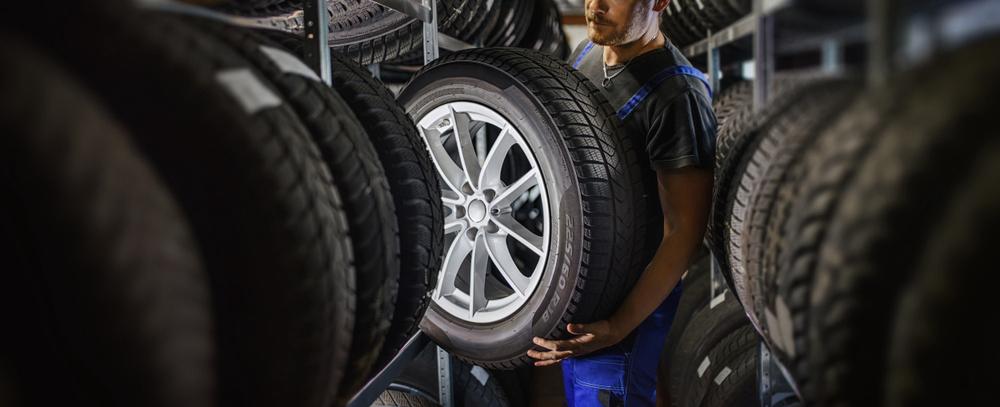Although tires are by no means a glamorous part of cars, they are some of the most important features. Without the tires, your car wouldn’t be able to move safely along the road. While safety is the number one priority when it comes to tires, this isn’t the only thing that they affect. In fact, tires play a significant role in the handling and fuel efficiency of your vehicle. As with every other hardworking component of a vehicle, tires need to be properly cared for to guarantee their performance and durability. From proper inflation to tire shine, learn more below.
Maintain Proper Tire Pressure
For optimal safety and performance, tire pressure needs to be properly monitored. This is because underinflated tires can lead to the following:
- Increased wear and tear on the outer edges, reducing their lifespan.
- Reduced fuel efficiency.
- Poor handling, as the tire is more prone to flexing, which affects steering and cornering.
On the other hand, overinflated tires can result in the following:
- Uneven tread wear in the center of the tread.
- Reduces shock absorption, which can cause damage to the wheels.
- Blowouts.
Check Tire Pressure Regularly
You should check your tire pressure on at least a monthly basis and before any long journeys. It’s always best to assess this when your tires are cold, as the pressure can be slightly elevated after driving. The specific tire pressure for your car can be found in the door jamb or owner’s manual. P.S., you should always make sure you have your spare tire with you in case you encounter any punctured or blown tires.
Use a Pressure Gauge
A good quality pressure gauge will tell you whether your tire pressure is correct. Although dial gauges a probably easier to read, digital ones are typically more convenient. When checking your tire pressure, you’ll need to remove the valve cap and press the gauge firmly onto the valve for an accurate reading.
Top Up Air
The vast majority of gas stations have air pumps that customers can use to top up their tires. You need to make sure they’re inflated to the right pressure, but if you accidentally overinflate them, you can slowly release the air by pressing the valve stem with the tip of the pressure gauge until you reach the right level.
Inspect Your Tire Tread Depth
Your tire’s lifespan can be determined by its tread depth and how it grips the road in wet conditions. Most countries have a legal minimum tread depth; for instance, in the US, it’s 2/32 of an inch.
Visually Inspect Tire Tread Depth
The grooves of tires generally have built-in tread wear indicators. These are small raised sections across the base of the tread, and when the tread surface wears down to the same level as the tread wear indicators, your tires are due to be changed.
Use a Tire Tread Depth Gauge
A tread depth gauge is both simple to use and affordable, making it an accessible way to get a precise measurement for your tread depth. If you find that the measurement is close to or below the minimum, this means that you’ll need to get some new tires.
Regularly Inspect Your Tires
Every couple of weeks, you should inspect your tires for signs of damage. These signs might include the following:
- Cuts and punctures
- Bulges or lumps
- Uneven wear
All in all, your tires are essential for your safety and the safety of others on the road. Don’t take the risk. Keep an eye on your tires and give them the attention they need to maintain the safety of your vehicle.



